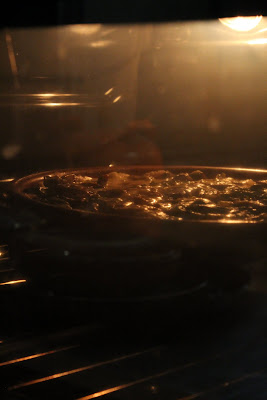This cake starts with figs. My initial idea was to make the cake sugar free, using only the figs as sweetener, but I later caved and added some sugar. But it is possible!
Put the dried figs (10 or so) in a bowl and pour steamed milk over the top. This helps soften them up for the food processor.

While those are getting ready, you can prepare the flour mix (all the measurements are estimates):
3/4 cup Almond flour (or use the food processor to grind whole almonds
1 cup Rice flour
1/2 cup Carob flour
Baking soda
Salt
On the stove, start melting:
1/2 bar dark chocolate
1/2 stick butter
splash of milk
And in a small bowl, whisk 3 eggs and a bit of sugar.

Now, those figs should be ready. Throw them in the food processor, and blend until smooth. Add the fig mixture to the chocolate butter, and then the eggs. Stir quickly so nothing cooks (the chocolate will still be hot).
Finally, add bit by bit the flour mixture to the liquid. Taste for sugar and consistency.

Now comes the exciting part: Not one, but TWO pans. Lined with aluminum foil or greased, separate the batter equally in them, and into the oven at 350. Bake for around 20 minutes, or until done (but be careful! Carob is tricky and the cakes turn a very dark brown so they look burnt, even if they aren't. Always check the middle with a knife or toothpick before taking them out).
For the middle filling, I ground up more almonds with a sticky brown sugar and a bit of butter. And the top is graced with a melted chocolate layer. Put on those layers!:

























